Hands immersed in flour and dough, endless turns of the machine, golden lengths of edible bliss, and the best of company. Making filled pasta might sound like too much work, but with a little time, some creative experimentation and help from friends, filled pasta made from scratch provides reward beyond belief.
If you’ve ticked fresh pasta making off your ‘to do’ list and are looking for the next pasta challenge, this post is for you. Making filled pasta is not as hard as it seems and the opportunities for fillings are as endless as your imagination and experimentation.
Almost all filled pasta styles are made from fresh lasagna sheets, so if you feel like making the exercise a little easier for yourself, you can always buy fresh lasagna sheets from the supermarket and cut out the need to make the pasta from scratch.
Like most Italian pasta dishes, each region has their own specialties including the ways the pasta are folded and their fillings. Don’t let the regional specialities stop you though, I’m here to tell you that you really can experiment with all of the elements and create pasta shapes and fillings that are truly unique – the world will not end if tradition is played with.
For this post, my wonderful friend John from He Needs Food came over to help me make, mix, fill and fold the pasta – It felt more like an explosion of ideas than a cooking day. While we were both tired by the end of it, we were rewarded with four types of pasta each with a different filling – John even managed to invent a new type of filled pasta (which we have named Pasta Bambù).
The four pasta types I am going to walk through in this post are as follows:
- Cappelletti – a filled and folded pasta named for their shape (cappelletti means “little hats”).
- Ravioli con Pasta Prezemolo – This ravioli uses pasta that has parsley (prezemolo) rolled into it as it is made meaning the parsley is inside the pasta itself (this style is sometimes called window pane pasta).
- Casoncelli – a variation on ravioli from the Lombardy region usually made with a meat filling.
- Bambù – our brand new type of filled pasta that John invented which are filled tubes pressed to look like bamboo.
At the bottom of this post I have included my recipe for plain pasta dough, and the individual filling recipes we used for each pasta should you want to try our fillings. Most of them are interchangeable, and if you can’t find or don’t like an ingredient, just replace it with something else and experiment.
We’ve take photos all the way through to help you with the techniques, but there are also great You Tube videos that can help with how to fold them if you search online. Also, there is often more than one way to fold or roll each pasta to achieve similar shapes so never fear if you know, or learn a different technique.
Cappelletti
Cappelletti is seriously pretty filled pasta and its a great one for beginners as it’s look belies its ease! There are many ways to roll and fold Cappelletti, with many of them starting with a square of pasta, but I prefer the clean look when they are made from a circle of pasta. Here is how I make cappelletti:
- Cut a circle of pasta from a fresh pasta sheet – we used an egg ring which was the perfect size.
- Add a half teaspoon of filling in the centre and brush the edges with water (image top left above).
- Fold the pasta circle in half securing the edges together and pushing the air out to end up with a crescent shape (coincidentally, if you stopped here you would have agnolotti).
- Using the edge of a cup or chef’s ring, place the centre of the crescent on the edge and fold the pasta down till the two tips reach each other (image top right above).
- Pinch the tips together to close the cappelletti (bottom image above)
Ravioli con Pasta Prezemolo
Making ravioli is relatively easy. Essentially it is filling sandwiched between two sheets of pasta. This can either be done with a ravioli mold, ravioli presses, circles of dough or squares. Given how easy it is to make them, I thought I would share with you a wonderful technique called window pane pasta. It has parsley embedded in the past itself and looks wonderful when cooked. This technique doesn’t seem to have an Italian name (although if you know what it is please let me know!), so I’ve just called it Ravioli con Pasta Prezemolo (Ravioli with Parsley Pasta). Here’s how it is done:
- After you have rolled all of your pasta sheets out to the thinnest setting, lay one sheet down on a floured bench and top with fresh parsley leaves.
- Lay another sheet on top and press down gently. There is no need to use any liquid to join the sheets as they will be going back through the machine (image top left above).
- Roll both sheets with the parsley back through the machine until they are joined together as one with the parsley in between.
- Using a chef circle or egg ring, cut circles from the parsley pasta sheets (image top right above).
- Place a 1/2 tablespoon of filling in the centre of a pasta circle and brush around the edges with water.
- Place another circle on top and then join the edges making sure you push all the air out of the ravioli as you press down (bottom image above).
Casoncelli
This is my new favourite filled pasta type thanks to chef Lewis Cheetham who taught me how to make Casoncelli at Red Feather Inn in Tasmania in April. There are a couple of ways to fill and fold them, but I find his way the quickest.
- Pipe the filling in a line across the long edge of a pasta sheet leaving a 1 cm gap from the edge (image top left above).
- Brush the long edge of the pasta with water and fold the long edge over the filling securing it to the pasta on the other side (making a tube of pasta).
- Roll the tube of pasta on itself again and then using a knife or crimped pasta wheel cut off the left over pasta leaving a 1.5cm edge.
- Using your thumbs and forefingers to pinch the filling into 3cm sections squeezing the pasta to join together (image top right above).
- Cut the pasta so that each 3cm pillow of filling is one filled pasta piece and use your finger to make an indent on the top of the pillow (I forgot to do this).
Bambú
With thanks to the ever creative powerhouse that is John Bek (follow him on Instagram, he is an ex chef with Croatian heritage and a total genius), we have a brand new type of filled pasta for you to try. After experimenting all day with flavours and techniques, John had an idea. So with a piping bag and a chopstick he made bamboo pasta (bambù is the Italian word for bamboo). It’s super easy…
- Using a thin nozzle, pipe the filling in a line across the long edge of a pasta sheet leaving a 1 cm gap from the edge (image top left above).
- Roll the pasta over the filling so that it forms a long tube and cut off the excess (image top right above).
- Using the pointy edge of a chopstick, press down at 1.5cm intervals to create pockets of filling (bottom image above)
- Cut the lengths of “bamboo” so that one piece of bamboo pasta has 6 small filled sections.
Pasta Fresca | Fresh Pasta
Ingredients
- 600g Tipo '00' flour (Italian pasta and bread flour)
- 6 eggs
- 1 tablespoon olive oil
- Extra flour for dusting
Directions
The pasta ratio I use to determine how much flour and egg is required is as follows: 1 person = 100g flour + 1 egg.
Place the flour on a clean bench. Make a well in the centre and crack the eggs into it. Beat the eggs with a fork until smooth. Using the tips of your fingers, mix the eggs with the flour, incorporating a little at a time, until everything is combined, then add the olive oil.
Knead the pieces of dough together until one large lump of dough forms. You need to work the dough until it become smooth and elastic. Kneading the dough will take about 10-15 minutes of hard kneading. Once smooth and elastic, wrap it in glad wrap and put in the fridge for 30 minutes.
Clamp your pasta machine to the bench and dust the bench top with flour. Cut a lump of the dough (about the size of a small orange) and flatten it out with the palm of your hand. Set the pasta machine at the widest setting and roll the lump through. Then set the machine down a level and roll the dough through again. Continue this process going down a level each time until you get it as thin as you desire. Repeat with all of the dough until you are left with fresh lasagna sheets. The filled pasta types below all begin with lasagna sheets. If you are wanting to make fettucine, then head to the Fresh Pasta post here.
Pasta Fillings
Ingredients
Casoncelli Filling | Ricotta and Pine Honey
- 100g fresh ricotta
- 1 1/2 tablespoons pine honey (or a plain fragrant honey)
- Salt and Pepper, to taste
Cappelletti Filling | Mushroom and Olive Paste
- 3 button mushrooms
- 3 tablespoons olive paste
- 1 teaspoon smoked paprika
- 1/2 teaspoon salt
Ravioli Pasta Prezzemolo Filling | Spinach and Ricotta
- 1 bunch english spinach
- 1 teaspoon olive oil
- 1 garlic clove, finely chopped
- 200g ricotta
- 1/4 teaspoon grated nutmeg
Bambu Filling | Nduja and Red Pepper Paste
- 2 tablespoons red pepper paste
- 1 tablespoon Nduja (Italian chili sausage paste)*
- 2 teaspoons Parmigiano-Reggiano cream**
Directions
CAPPELLETTI FILLING
Roughly chop mushrooms and place in a small blender with olive paste. Pulse until it resembles a rough paste, then add the paprika and salt and mix until well combined.
RAVIOLI PASTA PREZEMOLO FILLING
Trim the leaves from the spinach stems and discard stems. Roughly chop the spinach. Heat olive oil in a large frypan over medium heat, then add the garlic and sauté until fragrant. Add the spinach and cook tossing constantly until spinach has wilted. Remove and set aside to cool. When cool, place spinach in a tea towel and squeeze all the water from the spinach. Transfer to a chopping board and finely chop until the spinach is paste-like. Place in a bowl with the ricotta and nutmeg, then season with salt and pepper, and stir to combine.
CASONCELLI FILLING
Simply combine the ricotta and pine honey in a small bowl, then season with salt and pepper to taste.
BAMBU FILLING
Combine the Nduja, red pepper paste and Parmigiano-Reggiano cream in a bowl.
*Nduja is a spicy spreadable sausage paste originally from Calabria. Good Italian butchers in Australia should sell Nduja paste.
** I bought Parmigiano Reggiano cream in Italy. It comes in a small jar and doesn't require refrigeration. I'm currently trying to source suppliers in Australia and the US and will update soon with where to buy - this stuff is INCREDIBLE.
Chew Town was not paid to develop this recipe, but was gifted the Marcato Atlas 150 Design Copper Pasta Machine from Everten. Their Marcato machines can be purchased HERE. Everten stocks over 8,000 kitchenware products online. It was one of the first online kitchenware retailers in Australia and is still a family owned business to this day. To read Chew Town’s disclosure policy please visit the About page.


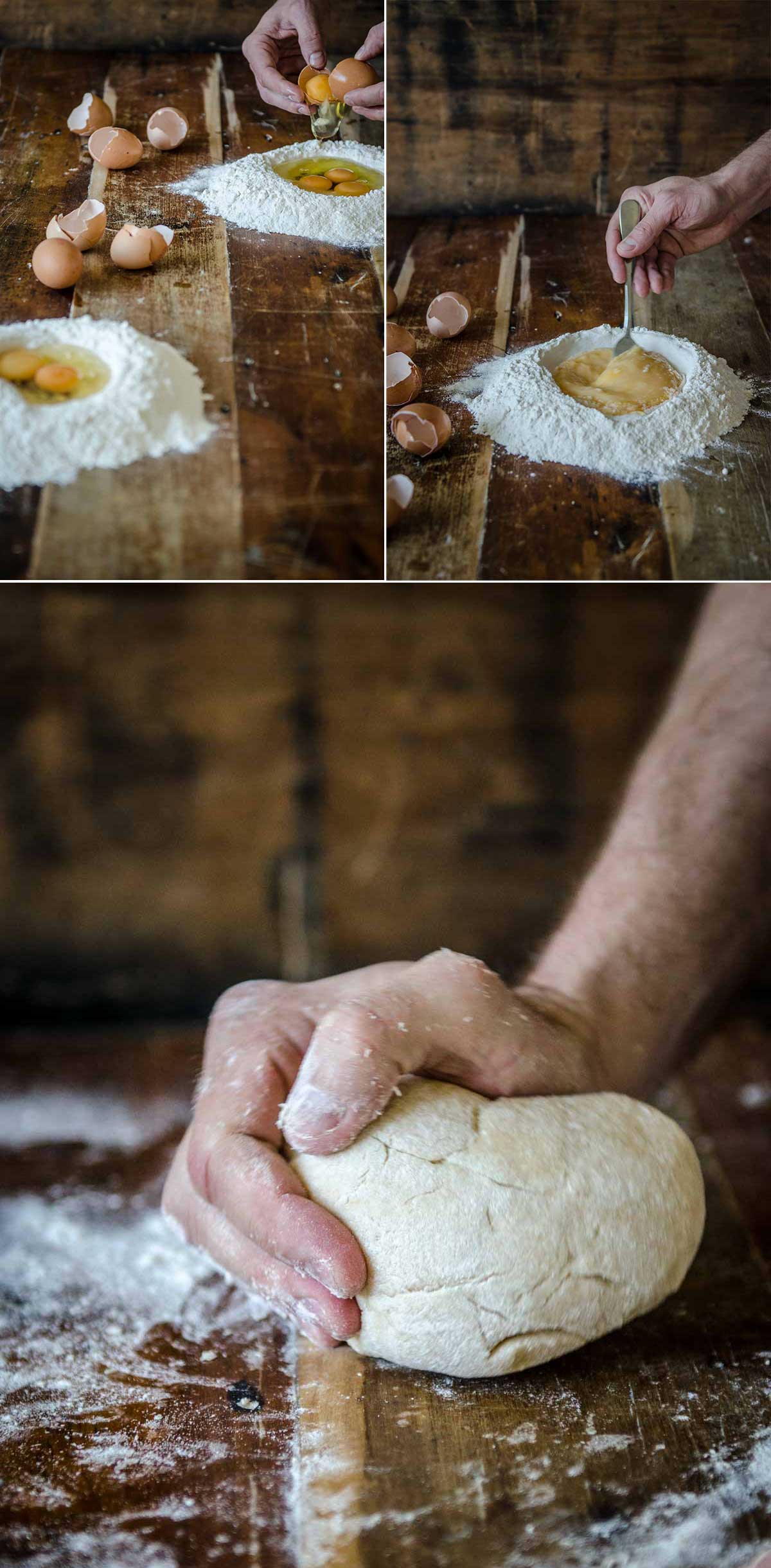
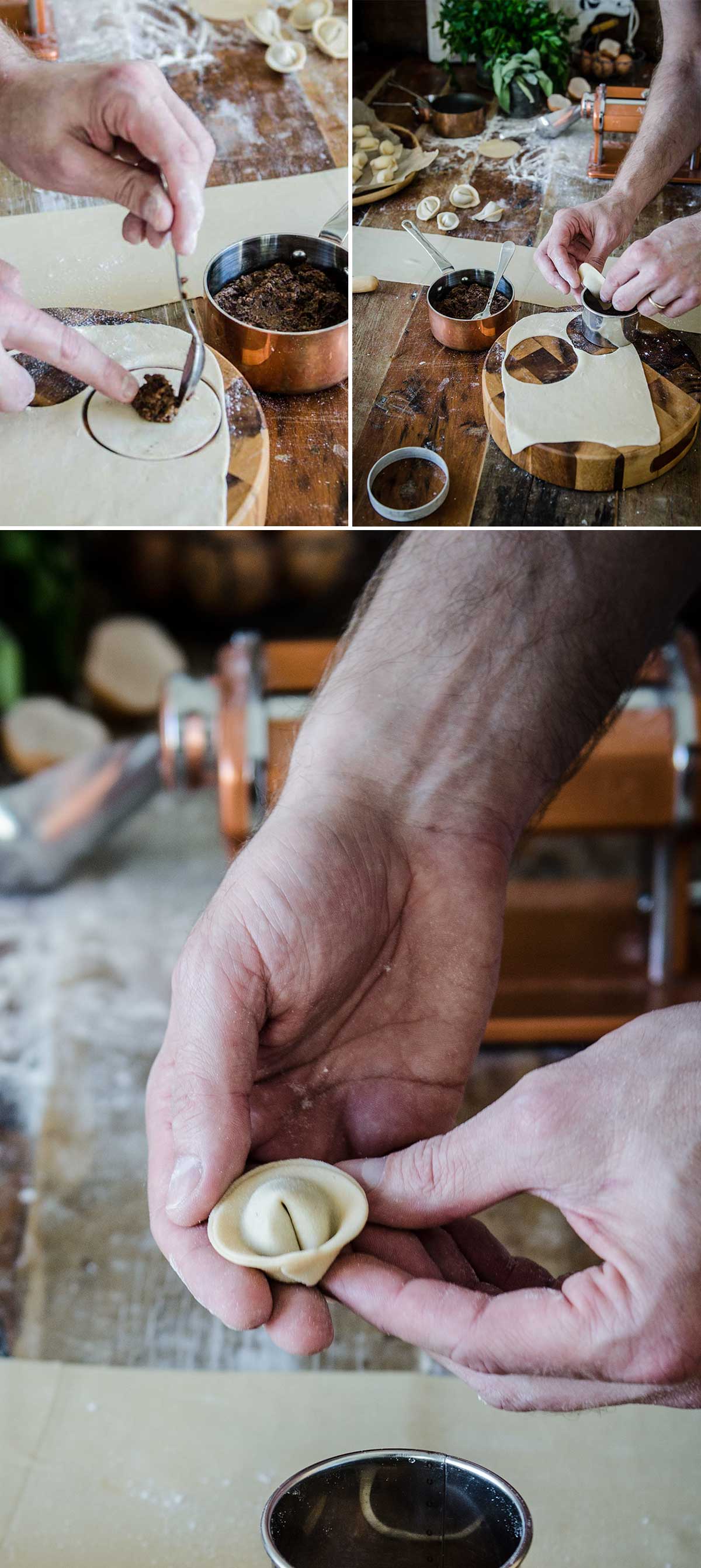




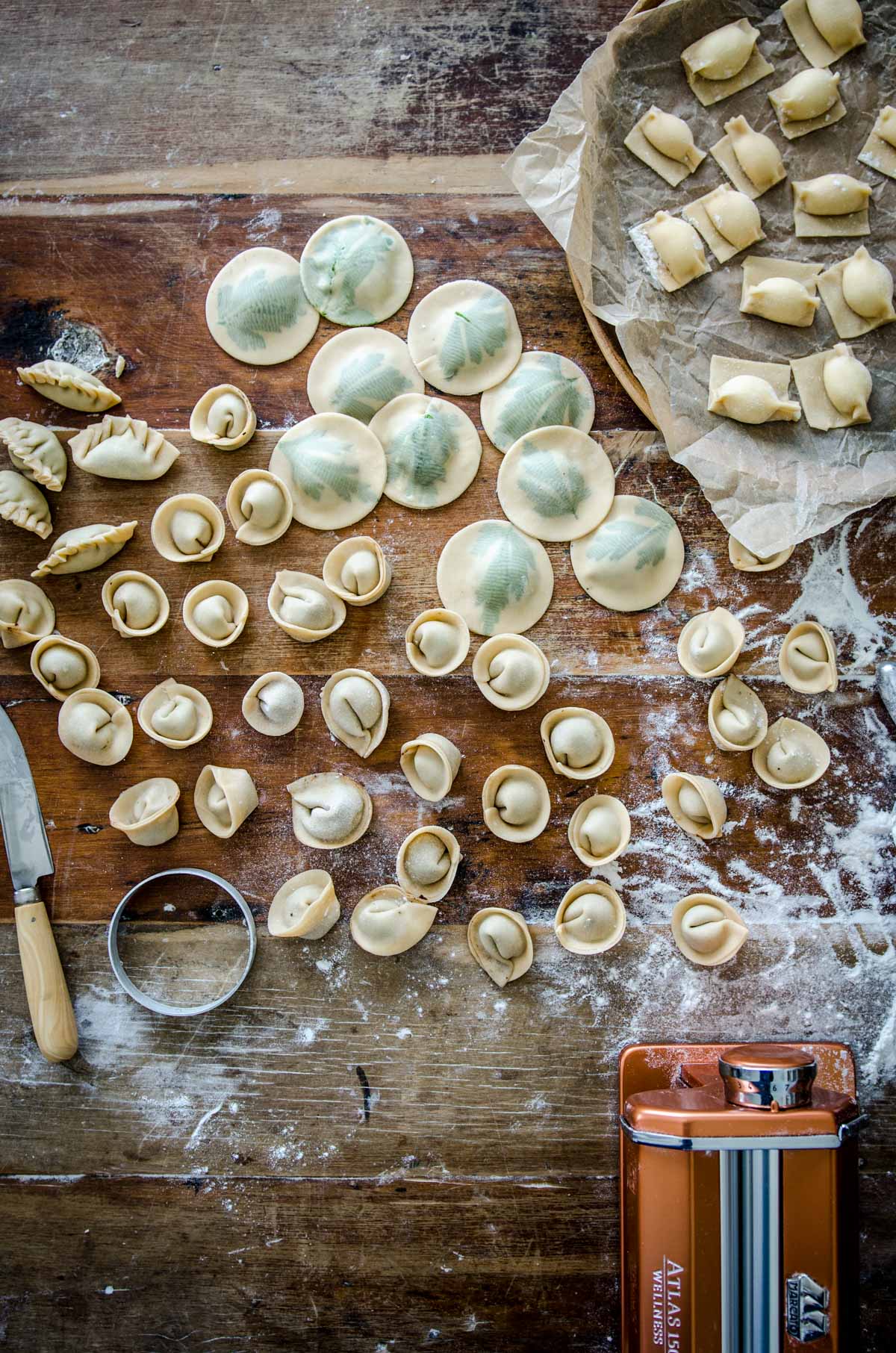
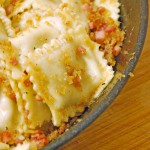
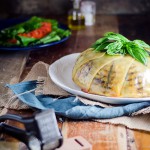
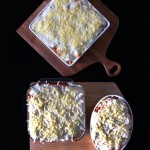
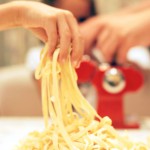


What a wonderful post, I have both chickens and ducks at home and homemade pasta is always a real treat… Love the bambu, gotta give that a try 😀
Recent Post: Blue Cheese and Onion Salad with Arugula
Oh wow! I would kill to have chickens and ducks – Duck egg pasta is incredible!
Holy moly these photos are gorgeous! And the pasta looks amazing!
Thanks Sarah. Fresh pasta is definitely something else.
What an absolutely beautiful and informative post. I love all these different pastas, and am inspired to get my pasta machine out soon.
That’s great news Helen, I was hoping it might inspire people to give it a go.
That pasta is so pretty! I almost never make any homemade pastas will have to try!
Thanks Diana. You’ve got to make pasta again – its so rewarding!
Stunning post – so many beautiful pastas. I really need to try making my own. Inspirational!
Thanks Kate! There definitely are a few to try here… I’d recommend only one or two otherwise you’ll be too pooped by the end of it!
Great post! I love making pasta. Been awhile since I’ve done it — you’ve got me in the mood. 🙂 Weighing ingredients is the only way to go in making pasta, I’ve decided — the US method of volume measurements is just too iffy. Good post, great pictures — thanks.
Recent Post: Ice Cream Shrub Soda with Booze (or not)
The more I cook, the more I realise that weighing is the only way to go. Chef’s have been saying it for years, but you don’t quite realise it until you start baking more and you have some baking failures because you used volume not weight (clearly that’s what happened to me!)
Memories Of chilhood! Just Like My Mum House and table with pasta, pasta, noodless! No machine ALL hand work, GOD bless her! As for me use to make and bake for ever but no more Not just for one person. Thank YOU kindly for the post. Regards, VG.
Wow! No machine at all? That’s incredible. A lot of hard work, but very rewarding at the end. Lovely to hear from you Vera!
This is a fantastic tutorial with some absolutely stunning photos; I particularly like the ravioli with the parsley, it is such a pretty effect
Recent Post: Easy, No-Churn M&M’s Cookie Dough Ice Cream With Chocolate Fudge Swirl
Thanks so much Hannah. I want to try so many different types of herbs in the pasta now!
This would have to have been the most fun I’ve had in a long time. Hanging out, getting dusty with flour and brainstorming. Oh, and sipping on red vino all the way. What a blast!
How much fun was it! Can’t wait to do it again soon… but I know it’s going to have to wait a year 🙁 Maybe when we meet up in Italy, we can convince an old nonna to let us into her house to make pasta with her!!
Oh wow! All of these filled pastas are little works of art. Just gorgeous. As soon as you find a local stockist of Parmigiano-Reggiano cream please let us know. #need
Recent Post: Coconut-topped cocoa brownies
I’m still trying to find one Bel! I think I’m going to have to buy it in Italy again… If I do, you’re on the list for a jar!
I so love homemade pasta. I’m glad I came across this post and found something new to try with my pasta maker. Thanks!
Thanks Kitchen Gadget! It’s always fun to make new things with pasta.
Dear Amanda,
I hazard a guess these pasta is better than those in many restaurants.
You’re too kind Chopin & My Saucepan!
Sounds like quite the fun day was had. Loved this post Amanda, wish I had been a fly on the wall or a kitchen assistant that day. The pasta machine is a beauty and I have board/table envy of your kitchen area. John’s imaginative bambu and filling using that Nduja was great. Need to look that up at my local Italian market. Cheers!
Astonishing! Thank you for the tips, they all look lovely. I’ve had a couple of attempts to make pasta at home and they all ended in a huge mess in the kitchen. But this post motivates me to try again. Thank you, Amanda!
P.S.: stunning pasta machine! : ))
Posso confermare queste ricette sono buone. Cucino altri simili
I love your blog and a wonderful article, I love cooking in my childhood days and collected more Indian recipes. In this blog, I learned how to cook pasta in a pasta machine. I really enjoyed your article. We’ll meet again in the next new post. http://bblfoods.com/ Thanks for sharing your awesome blog.